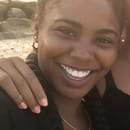As a proud HBCU student, it is imperative to know what one does not already know about the history of African-Americans. Due to eurocentrism being the foundation of this country’s education, students of color are not as familiar with their history, therefore, remaining obedient to the systematic norms of eurocentric culture. Representation in the science, technology, engineering, and math (STEM) field will devote to the rise of young perspectives of color. The trend in recent years in STEM programs has a high rate of white students with more than 80 percent and less than 13 percent of students of color.
Just as representation is important for television, modeling, and advertisements, it is just as important in education. Students of color, specifically Black and Brown students, in impoverished neighborhoods are limited to certain opportunities. Gearing black students towards STEM will broaden their minds and that there is more out there for them. When students see their people, from the past and present, being successful in a field that is predominantly the white majority, they feel a sense of pride knowing that not all career fields are reserved for those who have more privilege in their upbringing of education.
As a black woman in a STEM, nothing else would be more astounding to see more girls majoring in physics, biology, chemistry, etc. In science textbooks, the majority of famous scientists are predominantly white men; Albert Einstein, Sir Isaac Newton, Louis De Broglie, Erwin Schrodinger, and countless others. With just minimal research, here’s a list of Black scientists whose names deserve to be acknowledged including the women who inspired the 2016 hit movie, Hidden Figures:
Katherine Johnson: calculated the trajectory for the first american to go into space
Dorothy Vaughan:(1910-2008) was an African American mathematician and human computer who worked for the National Advisory Committee for Aeronautics, and NASA, at Langley Research Center in Hampton, Virginia
Mary Jackson: (1921-2005) in 1958 became NASA’s first black female engineer.
Marie Maynard Daly: (1921-2003)First black woman to receive her Phd in chem: link that high cholesterol and clogged arteries is responsible for heart attacks.
Valerie Thomas: (1943-present)invented the illusion transmitter; concave 3D mirrors optical illusions
Emmett Chappelle: (1925-present) discovered that a particular combination of chemicals caused all living organisms to emit light.
Norbert Rillieux: (1806-1864) invented the multiple-effect evaporator
Ernest Everett: (1883-1941) his work on egg fertilization and the structure of the cell.
Alice Ball: created the first treatment for leprosy. 1892-1916
Annie Easley: developed Century: NASA’s high-energy rocket launcher. (1933-2011)
Bessie Griffin: developed an advice to help people with no limbs to feed themselves. (1914-2009)
Patricia Suzanne Cowlings: developed trainings for NASA astronauts to prevent space motion sickness. (1948-)
Christine Concelie Mann: Led NASA’s Space sonic boom group
In the past, African-American men and mostly women made their mark in the STEM fields but ignored due to racism, gender bias, and stolen credit. Therefore, their contributions have remained unknown and unseen. Findings of their work refrained from history which is a recurring theme. The enhancement in STEM technology piggybacks the work done by African-American women and men. These contributions deserve to be acknowledged and published in textbooks for STEM majors and younger students to acknowledge and recognize that white men are not all responsible for the findings and enhancement of technology. Discovering the truth of those who contribute to scientific findings and inventions that warp the way we learn in STEM, will direct a prominent rise of vanguards in STEM from all backgrounds; this follows the words and wisdom of activist Marian Wright Edelman, “you can’t be what you can’t see.”



